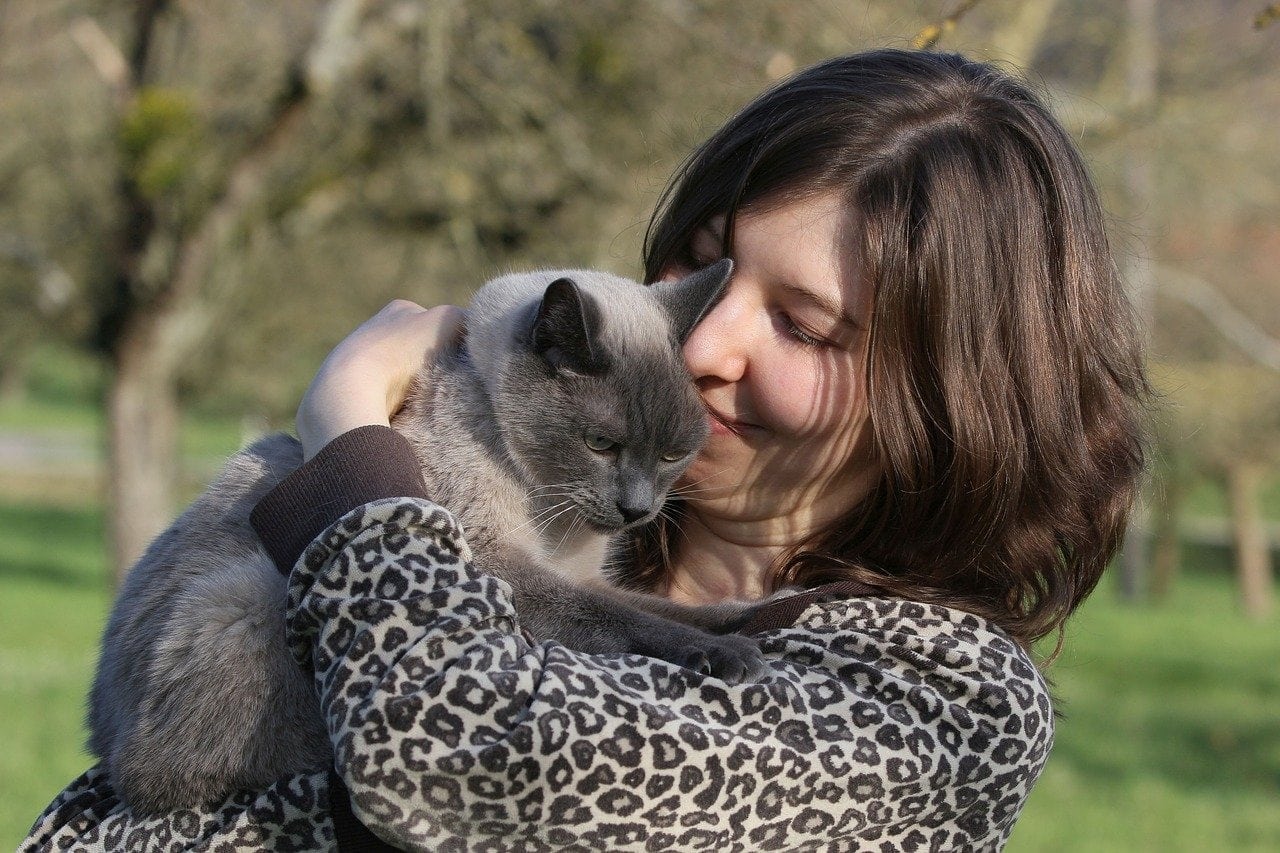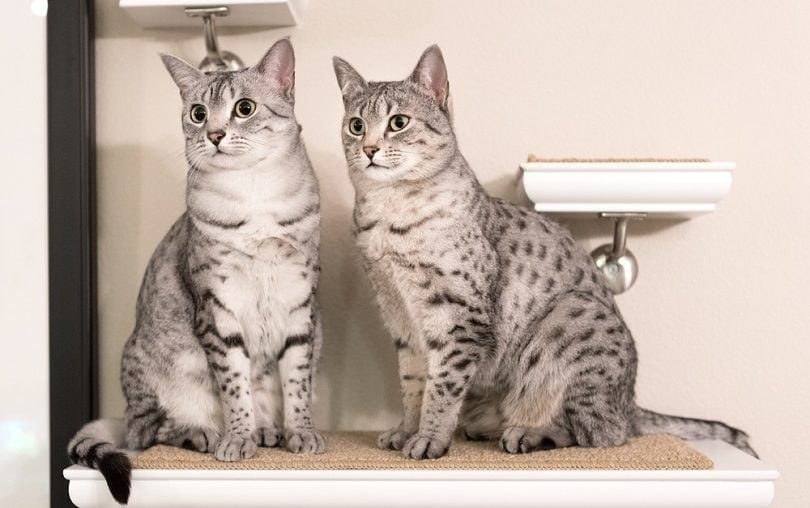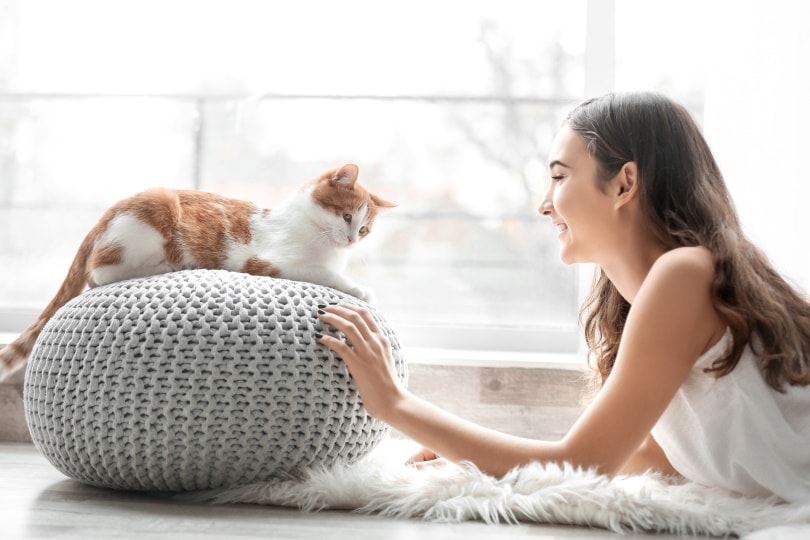How to Tell If a Cat Needs to Pee – Our Step-by-Step Guide

Updated on
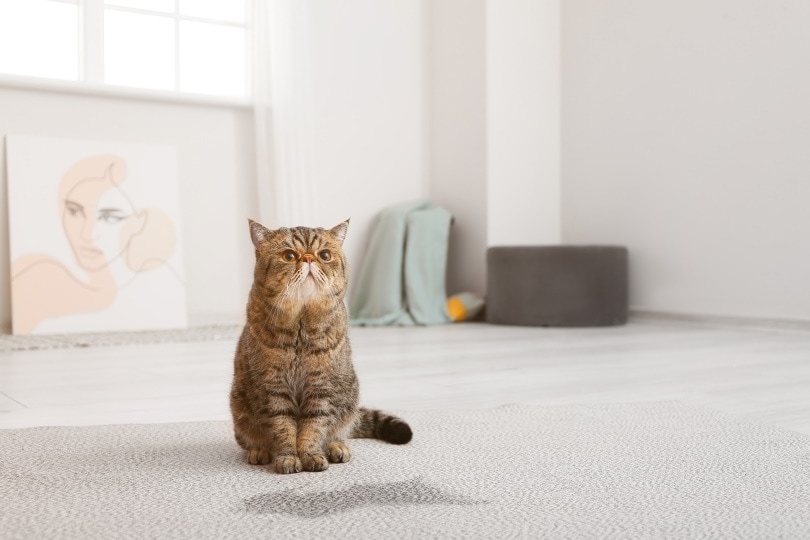
In general, cats are good at taking care of themselves. Once they’re familiar with where the litter box is, they’ll go when they need to. Sometimes, however, the litter box isn’t accessible. Also, young kittens are still learning about their tiny bodies.
By paying attention to your cat, you can learn so much about them, including when they need to use the bathroom. Since it isn’t always easy to tell what our cats think, we made this step-by-step guide to knowing when your kitty needs to pee.
How to Tell If a Cat Needs to Pee: Step-by-Step
1. Watch Their Behavior
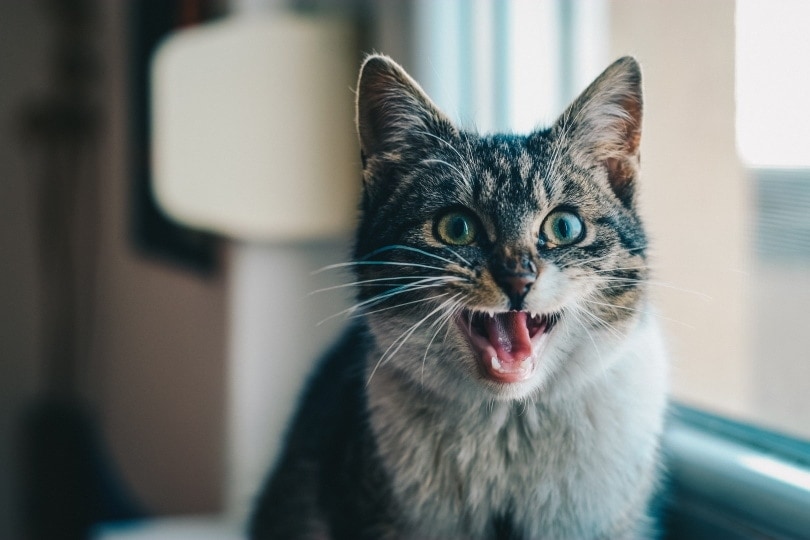
All veteran cat owners can attest to how talkative even the meekest cat can sometimes get. They’ll go from keeping to themselves in the corner to talking your ear off about something they’re irritated about. The same goes for whether their potty requirements are being met.
While we can’t understand our feline’s vocal protests, you can learn a great deal by paying attention to their body language.
Digging
Cats dig holes to do their business in the wild. They gravitate toward soft ground and cover the evidence when they’re finished. If you find your kitty “digging” on a carpet or blanket, pick them up and take them to the litter box, just in case.
Meowing
Cats will talk when they want to. They’re not afraid to voice their opinions if they need to tell you something or complain. Informing you of their full bladder and an inaccessible or dirty litter box will get them meowing incessantly.
Pawing at the Door
Outdoor and indoor cats know where to deposit their waste. If you don’t have a cat door to the outside world, you’ll find your outdoor explorer asking to be let out when they need to use the bathroom. They’ll do this by pawing at the door, running to it whenever you get close, or even standing beside it and meowing.
Similarly, your indoor cat will paw at the door that they know their litter box is behind. If you put your litter box in a closed-off room and forget to leave the door open, consider adding a cat door to keep it accessible.
Hyperactivity
Cats often express their discomfort in ways we might find strange. A sudden burst of hyperactivity can indicate your cat needs to pee. It could also be caused by a sudden urge to be playful after being cooped up all day.
Pay attention to whether your cat is being more mischievous than usual, trying to get to places they shouldn’t, or paying more attention to the earth in your potted house plants.
Squatting
Cats squat when they use the bathroom, so you should watch for signs of the behavior, especially from kittens. They’ll often try to find a soft place to pee to mimic the dirt they’d dig in outside so they can cover it again afterward.
If you catch your kitten squatting, gently pick them up and relocate them to their litter box.
2. Check the Litter Tray
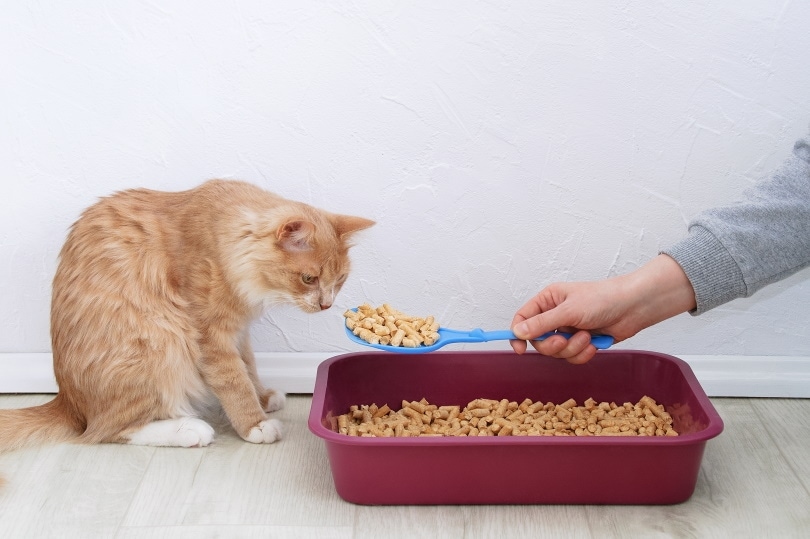
Many times, your cat will be vocal about their need to pee because the litter tray is full or inaccessible. Check the litter box if you find your cat exhibiting this behavior. Sometimes, a quick fix is as simple as cleaning it out or propping open a door that someone shut.
In the case of multi-cat households, it’s recommended to have several litter boxes available: one for each cat, plus one, just in case the others are full. This will give your cats plenty of options, even if it means you must spend more time cleaning them out.
Having more litter boxes around will also help if one of your cats bullies the others and stops them from using the litter tray. Another issue that can prevent your cat from using it is when they think the litter tray is too exposed. Place it in a quiet corner of your home, or purchase one with a cover to give your feline more privacy.
Make sure the litter box is the right size for your cat, too. If the sides are too high for your arthritic senior or tiny kitten, they’ll be more likely to protest by peeing somewhere they can reach.
3. After-Dinner Potty Break
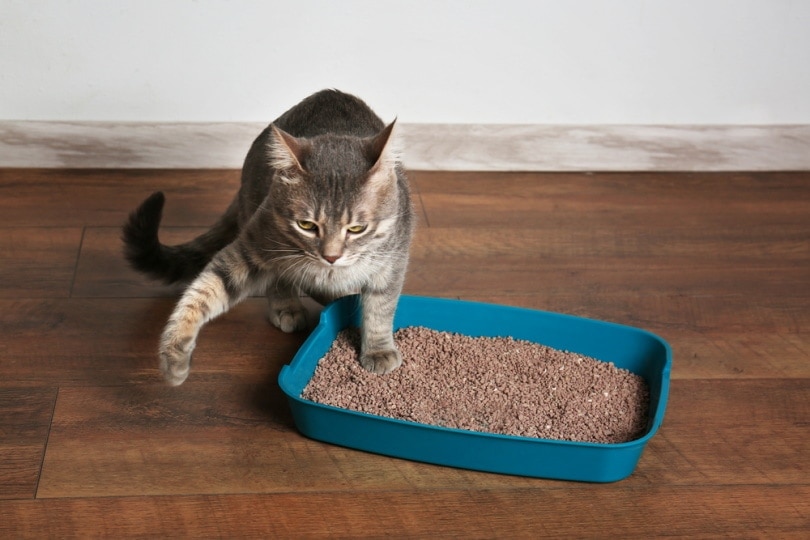
This step is primarily for kittens because they’ll be more likely to go to the bathroom shortly after eating or drinking. As a rule of thumb, when litter-training your cat, take them to the litter box once they’ve finished eating.
Don’t sit and stare, however. Cats are notorious for being private creatures, and if they feel pressured, they’ll find somewhere quieter to do their business.
Why Is My Cat Peeing Outside the Litter Box?
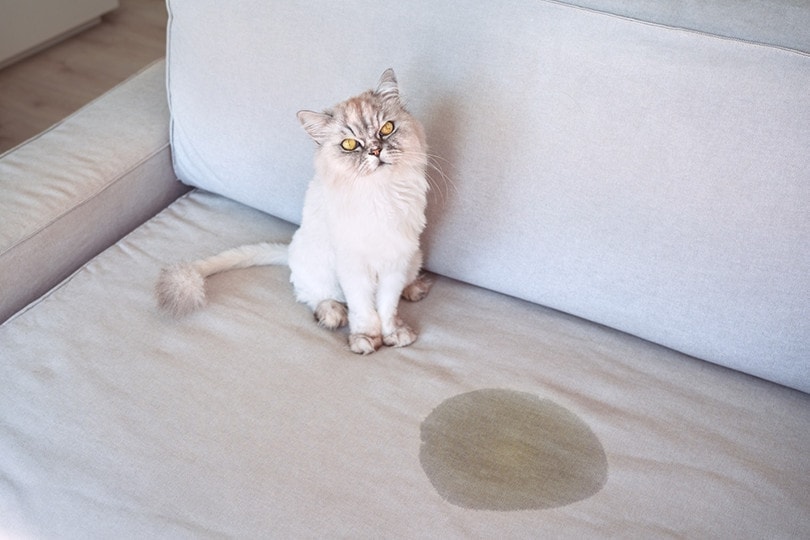
Even if your cat is trained to use the litter box, there are still occasions when you’ll find an icky surprise somewhere else. Usually, your cat will wait until the litter box is clean and accessible, but they won’t hold it forever.
If you’ve ignored their needs for too long or work has kept you longer than usual, your cat will find another bathroom. Doing their business outside the litter box isn’t always a protest to the lack of attention that they’re getting. Sometimes, it can be due to one of the following reasons.
Litter Box Trouble
Making sure your cat is comfortable with their litter tray doesn’t just mean keeping it clean and accessible. You should also consider how many cats use it, the design of the litter box, and the litter itself.
Cats can be bullies and sometimes pick on family members, which can prevent some from using the litter box. Where they use the bathroom has to be just right, and if the texture of their litter is wrong or unfamiliar, they won’t use it.
This can be an issue if you’ve recently switched to another litter type. Try to gradually introduce the new brand so the change isn’t as obvious. The same can be said for the litter box. Some cats don’t mind enclosed boxes, while others feel trapped. Comfort is a necessity regarding a cat’s bathroom habits.
Sometimes even the best litter box setup needs a helping hand in combating invasive smells. Our Hepper Advanced Bio-Enzyme Cat Litter Deodorizer naturally breaks down odors at the source. This effective litter additive can help all types of cat litter last longer, saving you money, and is safe for all life stages. Best of all, it's 100% biodegradable and fragrance-free.
- Bio Enzymatic Cat Litter Freshener - Smart formulation uses natural ingredients eliminating cat...
- Save Money - Stuff for cats isn’t the cheapest. With this litter box odor eliminator, you’ll...
Medical Issues
Urinary tract infections, diabetes, kidney disease, or arthritis are all possible ailments that can cause your cat to go to the bathroom where they shouldn’t. It’s not always easy to tell if your cat has a medical condition, so it’s a good idea to get them checked by a veterinarian, especially if you’ve established that the litter tray is accessible and cleaned regularly.
Stress
Like other animals, cats experience stress, which disrupts their lives and health. They like their routines; even a tiny change can throw them off their game. Big moves, like rearranging your furniture, moving to a new house, or even welcoming a new cat into your home, are all stressful.
The good news is that once your cat is settled, they’ll probably return to using the litter box as they should. If not, it could be a sign of an underlying health issue.
Final Thoughts
Cats can be particular about their bathroom habits, but they can also be incredibly vocal when something is bothering them. By learning how they express themselves through body language and vocalization, you can determine what your cat is trying to tell you, including whether they need to use the bathroom. The three steps we discuss should help resolve whether your cat needs to pee or just wants attention.
Related Reads:
Featured Image Credit: Pixel-Shot, Shutterstock





